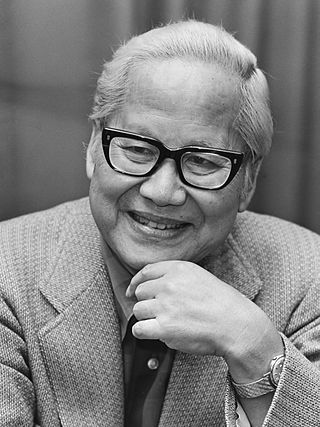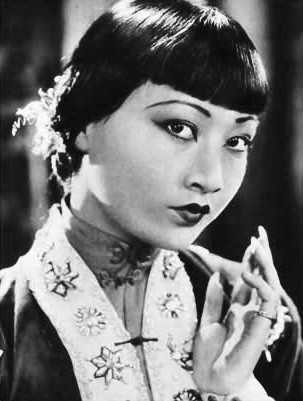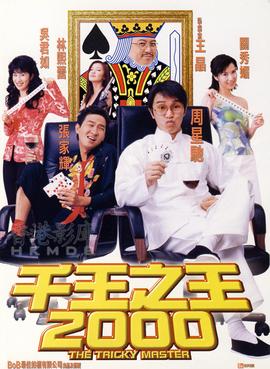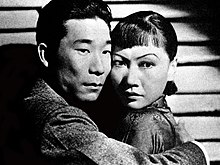
The Good Earth is a 1937 American drama film about Chinese farmers who struggle to survive. It was adapted by Talbot Jennings, Tess Slesinger, and Claudine West from the 1932 play by Owen Davis and Donald Davis, which was in itself based on the 1931 novel of the same name by Nobel Prize-winning author Pearl S. Buck. The film was directed by Sidney Franklin, with uncredited contributions by Victor Fleming and Gustav Machaty.

Fury is a 1936 American crime film directed by Fritz Lang that tells the story of an innocent man who narrowly escapes being burned to death by a lynch mob and the revenge he then seeks. The film was released by Metro-Goldwyn-Mayer and stars Sylvia Sidney and Tracy, with a supporting cast featuring Walter Abel, Bruce Cabot, Edward Ellis and Walter Brennan. Loosely based on the events surrounding the Brooke Hart murder in San Jose, California, the film was adapted by Bartlett Cormack and Lang from the story Mob Rule by Norman Krasna. Fury was Lang's first American film.
Robert Florey was a French-American director, screenwriter, film journalist and actor.

Shanghai Knights is a 2003 American martial arts action comedy film. It is the sequel to Shanghai Noon, and the second installment of the Shanghai film series. Directed by David Dobkin and written by Alfred Gough and Miles Millar, it stars Jackie Chan, Owen Wilson, Fann Wong, Donnie Yen and Aidan Gillen.

Keye Luke was a Chinese-born American actor, and a founding member of the Screen Actors Guild. He portrayed Lee Chan, the "Number One Son" in the Charlie Chan films, the original Kato in the 1939–1941 Green Hornet film serials, Brak in the 1960s Space Ghost cartoons, Master Po in the television series Kung Fu, and Mr. Wing in the Gremlins films. He was the first Chinese-American contract player signed by RKO, Universal Pictures and Metro-Goldwyn-Mayer and was one of the most prominent Asian actors of American cinema in the mid-20th century.

Wong Liu Tsong, known professionally as Anna May Wong, was an American actress, considered the first Chinese American film star in Hollywood, as well as the first Chinese American actress to gain international recognition. Her varied career spanned silent film, sound film, television, stage, and radio.

Philip Ahn was an American actor and activist of Korean descent. With over 180 film and television credits between 1935 and 1978, he was one of the most recognizable and prolific Asian-American character actors of his time. He is widely regarded as the first Korean American film actor in Hollywood. He is not to be confused with Philson Ahn, another screen actor who broke into films in the late 1930s; Philson was Philip's younger brother.

Shek Wing-cheung, better known by his stage name Shih Kien, Sek Kin, Sek Gin or Shek Kin, was a Hong Kong actor and martial artist. Shih is best known for playing antagonists and villains in several early Hong Kong wuxia and martial arts films that dated back to the black-and-white period, and is most familiar to Western audiences for his portrayal of the primary villain, Han, in the 1973 martial arts film Enter the Dragon, which starred Bruce Lee.
Portrayals of East Asians in American film and theatre has been a subject of controversy. These portrayals have frequently reflected an ethnocentric perception of East Asians rather than realistic and authentic depictions of East Asian cultures, colors, customs, and behaviors.

Dangerous to Know is a 1938 American crime film directed by Robert Florey and starring Anna May Wong, Akim Tamiroff and Gail Patrick. The picture is based on British crime writer Edgar Wallace's hit 1930 play, On the Spot, which had been inspired by the career of Al Capone. Anna May Wong reprised her stage role from the New York production in the movie. The supporting cast features Lloyd Nolan and Anthony Quinn.

Richard Loo was an American film actor who was one of the most familiar Asian character actors in American films of the 1930s and 1940s. He appeared in more than 120 films between 1931 and 1982.

Journey to the West is a Hong Kong television series adapted from the 16th-century novel of the same title. Starring Dicky Cheung, Kwong Wah, Wayne Lai and Evergreen Mak, the series was produced by TVB and was first broadcast on TVB Jade in Hong Kong in November 1996. A sequel, Journey to the West II, was broadcast in 1998, but the role of the Monkey King was played by Benny Chan instead, due to contract problems between Dicky Cheung and TVB. Cheung later reprised the role in another television series The Monkey King: Quest for the Sutra (2002), which was broadcast on TVB but not produced by the station.

Summer Snow is a 1995 Hong Kong comedy-drama film directed by Ann Hui. It stars Josephine Siao and Roy Chiao in leading roles. The film was selected as the Hong Kong entry for the Best Foreign Language Film at the 68th Academy Awards, but was not accepted as a nominee.

In the Face of Demolition (危樓春曉) is a 1953 Hong Kong drama film directed by Lee Tit and starring Bruce Lee, Cheung Ying, Ng Cho-fan and Tsi Law-lin. The film was ranked number 18 of the Best 100 Chinese Motion Pictures presented at the 24th Hong Kong Film Awards.

The Tricky Master (千王之王2000) is a 1999 Hong Kong crime comedy film directed by Wong Jing.

Our Time Will Come is a 2017 war film directed by Ann Hui, starring Zhou Xun, Eddie Peng and Wallace Huo. It revolves around the resistance movement during the Japanese occupation of Hong Kong. The film opened in China on July 1, 2017 to commemorate and to coincide with the 20th anniversary of the handover of Hong Kong from the United Kingdom to China. It was released in Hong Kong on July 6, and in the United States and Canada on July 7.
Wong Chung was an American film actor. He appeared in Barbary Coast (1935), in which he was the only Asian actor listed in the opening credits, unlike the Asian actors from the period.
Teresa Ha was a former Chinese television and film actress from Hong Kong. Ha is credited with over 260 films.

Boys Are Easy also known as Chasing Boys is a 1993 Hong Kong romantic comedy film directed by Wong Jing, it stars Brigitte Lin, Maggie Cheung, Chingmy Yau, Tony Leung Ka-fai, Jacky Cheung, Ekin Cheng and Jimmy Lin. The film ran in theaters from 12 August 1993 until 1 September 1993. The film is separated into 3 different stories, a male prostitute falling in love with a violent police officer; a kind social worker falling in love with a gangster; a naive virgin falling in love with a doctor.

















